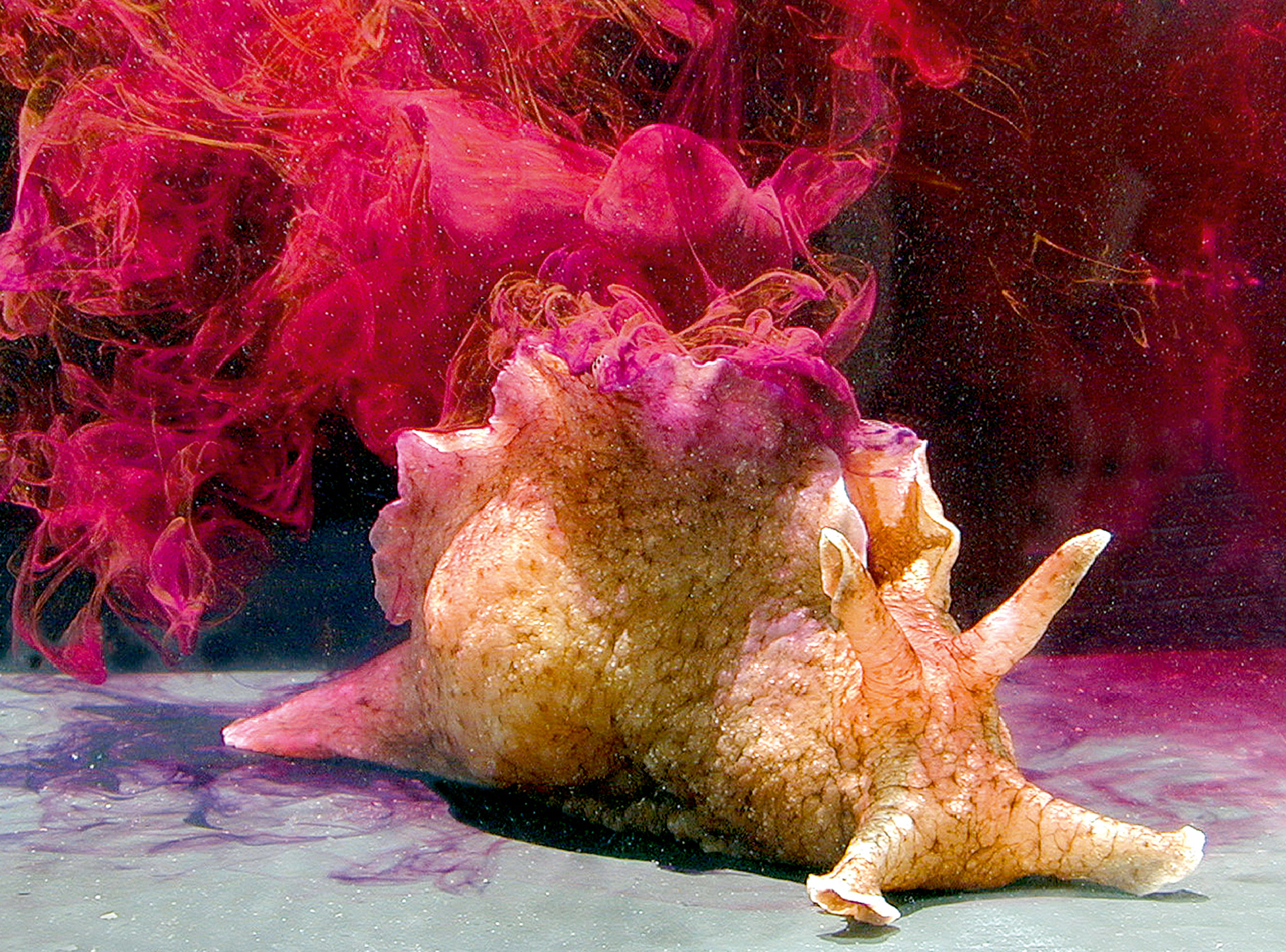Learning Degree Zero
How a sea slug revolutionized cognitive science
D. Graham Burnett

Aplysia californica is a soft-bodied marine invertebrate that makes its living nibbling red algae in the kelp beds and rocky reefs of the Pacific coast of the United States. They are meaty, sometimes weighing more than ten pounds, and the deep hues of their food give their translucent flesh the mottled marbling of polished tortoiseshell. When scrunched up contentedly, they look a bit like rabbits, on account of two earlike tentacular horns that sit atop their faceless heads—a resemblance that long ago gave rise to the common name for the whole taxon, known as the “sea hares” since antiquity. When irritated, A. californica release a cloud of acrid, mucosal, purple ink from a shockingly labial cleft that runs down the length of their backs and shelters the delicate folds of a feathery, blood-rich gill. They move feelingly and with a certain dignity, like large slugs—which is exactly what they are.
Stumbling on a defunct Aplysia in the tide-washed flotsam of a California beach, you would be inclined to dismiss its remains as yet another nasty gob of formless protoplasm coughed up by the deep. But in continuing your stroll, you would have walked past the creature upon which much of the modern scientific understanding of learning has been built.
For close to fifty years, Aplysia californica has served as the irreplaceable model organism at the center of what is arguably the most significant twentieth-century research program in the sciences of mind and behavior. In fact, on the afternoon of 8 December 2000, when the distinguished neuroscientist Eric Kandel stepped to the podium of Sweden’s Karolinska Institute to present his Nobel Prize lecture, he flashed up on the screen behind him a huge, photoshopped image of a robust Aplysia sporting around its extended neck Kandel’s golden medallion—the most coveted prize in science. The mollusk, it was agreed, deserved a little bling on the occasion.
So how did a herbivorous hermaphroditic gastropod end up as a Stockholm honoree? The answer requires a quick turn through the twentieth-century science of learning and memory.
To begin with, then, ask the most basic question: What is “learning,” anyway? A recent handbook in the field offers the following definition:
Learning is the process by which relatively permanent changes occur in behavior potential as a result of experience.[1]
Which is to say, learning is a little like an accelerated mechanism for evolutionary adaptation, one that works at the scale of the individual. If you can figure out how reliably to convert new experiences into revised behavior, you’ve just gotten a serious leg up on the business of being here, since you’ve effectively acquired the capacity to redeem some measure of the general unpleasantness of existence—you can now turn your bad breaks into lessons.